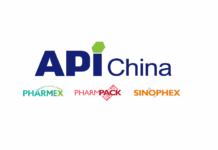The life sciences industry is going through a big change right now, thanks to the fast growth of new treatments like cell and gene therapies (CAGT) and big new investments in radiopharmaceuticals. These new ideas have the ability to make a huge difference in patient care by changing how conditions are treated and how well they perform.
But because they are new and technologies are changing so quickly, these innovations also bring new rules that are harder to understand and follow. This is different from the old way of making drugs in some ways. This means that keeping up with the changing rules is not only a legal requirement, but also a practical one that can have a big effect on how quickly and effectively these life-changing therapies reach patients.
In this highly controlled field, businesses need to know about the legal issues that come up with new methods. Drug makers face a task because new ideas are hard to understand and regulations vary from place to place. It’s not just important to keep up with all the regional and local rules for drug research; it’s necessary if you want to make it through the complicated and always-changing regulatory environment. Not doing so could lead to big problems, like drug approval delays and possible market pulls, that could make it harder for patients to get these important treatments. To keep up with the changing rules for new technologies like radiopharmaceuticals and CAGT, you need to use best practices to find the right regulatory routes and tactics.
Putting more money into radiopharmaceuticals
As more money is put into radiopharmaceuticals (radioactive substances used to identify and treat some diseases), it’s more important than ever to follow the rules set by regulators. There has been a huge increase in investment in these agents over the last six months. They are very important for imaging and are expected to grow at a rate of 10.2% per year, which is a very good sign for the future.
On the other hand, radiopharmaceuticals pose special problems for regulators. They have to meet strict rules for the safety of pharmaceuticals and radiation. This means that drug makers have to follow strict rules to make sure that these experimental products are handled and delivered safely. Important things to think about are following the International Atomic Energy Agency’s guidelines, making sure that site-specific radioactivity licenses are followed, and taking care of particular conditions for checking samples and materials used after the study.
Adding to the CAGT rules
Similar to this, CAGT also has to deal with legal issues as they try to improve standard treatment methods. CAGT shows a lot of promise in places where standard treatments might not work, and the rules for growth are getting stricter. The US Food and Drug Administration (FDA) just recently put out guidelines for genome editing chimeric antigen receptor T-cell treatments. These guidelines show how important it is for healthcare professionals and patients to have specific information to keep everyone safe. The US Food and Drug Administration (FDA) just recently set up the Office of Therapeutic Products, which shows how important and rapidly growing new CAGT treatments are. As these treatments are being developed, they may need to include odd patient groups, keep cells alive during the process, and have long-term follow-up needs for up to 15 years after the study.
Radiopharmaceuticals and CAGT are regulated in a lot of different ways. Drug makers have to find their way through a maze of constantly changing rules and guidelines. On top of that, because global rules aren’t always the same, businesses have to keep up with changing rules and local standards to meet the needs of different markets.
Keeping up with requirements that change
Given how complicated the regulatory world is, it is important to keep up with new rules and laws in order to encourage innovation while also ensuring compliance. As advertisers and drug makers try to keep up with the latest news, it’s important to change and adopt as quickly as possible. To stay ahead of legal trends, teams need to make sure they have the right tools. Here are some of the best ways to use new treatments like radiopharmaceuticals and CAGT:
- Stay up to date. Make screens and use tracking tools and methods to keep up with the latest changes in regulations. Check regulating bodies’ rules and other papers for advice on a regular basis.
- Put regulation data first. Add learning and regulatory history as more goods start to go through creation on their way to review and approval. Create policy study and lobbying plans based on science and data for important regulatory areas of drug development. Regulatory intelligence tools, like robots, can get better and faster answers with the help of artificial intelligence (AI).
- Outside knowledge. Add to the in-house knowledge by using outside skills and data analysis. Use the knowledge and experience that you’ve gained from working with the US Food and Drug Administration (FDA), the European Medicines Agency (EMA), and other regulatory bodies from around the world.
These new ideas will change the way patients are cared for by making it possible to treat diseases that have been hard to treat in the past in completely new ways. When dealing with the complicated rules for radiopharmaceuticals and CAGT, it is important to see these problems in the context of bigger trends in the business.
As medicine moves toward personalized care, it’s more important than ever that new methods are approved on time. Using technologies like AI and data analytics together is not only making treatments more effective, but it is also changing the way regulations are made. By coordinating legislative policies with these trends, we can make it easier for new treatments to be quickly developed and put into use. This will speed up the progress in healthcare toward more personalized and technologically integrated solutions.

















